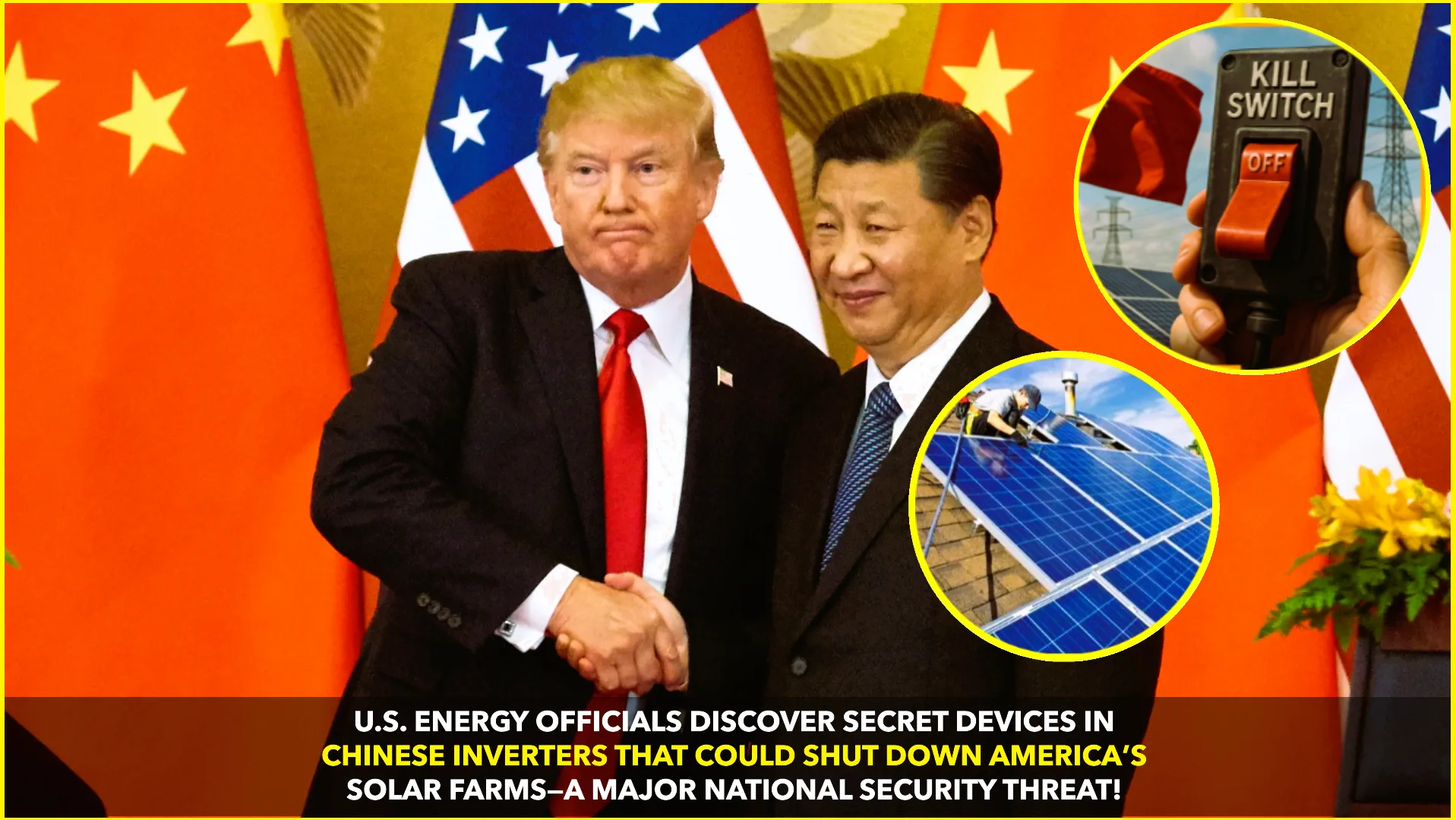In a development that has alarmed national security experts, U.S. energy officials have reportedly uncovered unauthorized communication devices, often referred to as “kill switches,” embedded in Chinese-manufactured inverters used in American solar farms. These devices could potentially allow external actors to remotely disable parts of the U.S. power grid, posing a significant threat to energy security.
The revelation, first reported by senior officials familiar with the investigation, has sparked a wave of concern among lawmakers and cybersecurity analysts, especially given the increasing reliance on renewable energy sources and the widespread use of Chinese-made components in American infrastructure.
What Are Inverters and Why They Matter
Inverters are critical components in solar power systems. They convert the direct current (DC) electricity generated by solar panels into alternating current (AC), which is used in homes and businesses. However, these inverters often include communication systems to allow operators to monitor and control their function remotely.
The unauthorized communication devices found in the Chinese inverters could bypass or override these systems, giving an external actor potential access to shut down or manipulate solar farm operations without detection.
The Discovery
According to internal sources, energy security experts from the U.S. Department of Energy (DOE), in collaboration with cybersecurity teams, discovered the suspicious components during a routine investigation into the integrity of the country’s solar energy infrastructure. The components, reportedly embedded deep within the inverter hardware, were not listed in official design specifications.
Officials stated that while there is no current evidence the devices have been activated or used for malicious purposes, their very presence raises significant concerns about the potential for sabotage or cyberattacks targeting the nation’s electrical grid.
Implications for National Security
The timing of this discovery is critical, as the U.S. continues to expand its renewable energy capacity in a bid to meet climate goals and reduce dependence on fossil fuels. With solar power becoming a key element of the grid, any vulnerabilities in its infrastructure could have far-reaching consequences.
Experts warn that the presence of hidden remote-access features in critical energy infrastructure could allow foreign adversaries to cause widespread disruptions, particularly during periods of geopolitical tension. The ability to remotely disable solar farms could not only lead to localized blackouts but also disrupt essential services and weaken public trust in the energy system.
Brandon Wales, executive director of the Cybersecurity and Infrastructure Security Agency (CISA), emphasized the importance of securing energy assets: “We cannot afford to overlook supply chain vulnerabilities in technologies that are essential to our grid. This incident underscores the urgent need for comprehensive inspections and domestic alternatives.”
Government Response
Following the discovery, federal authorities have launched a broader review of solar energy equipment imported from China and other foreign nations. The Department of Energy has also reportedly advised energy providers to audit their infrastructure for similar vulnerabilities.
In Congress, bipartisan calls for action have emerged. Lawmakers are now urging stricter regulations on imported energy technology and advocating for increased funding to develop domestic manufacturing capabilities for critical components like inverters.
Senator Mark Warner, chair of the Senate Intelligence Committee, stated, “This is a wake-up call. We need to know exactly what’s powering our grid — and who has access to it. National security must be a top priority as we transition to clean energy.”
Moving Forward
The incident has reignited the debate over the security risks posed by foreign-made technology in U.S. infrastructure. While renewable energy remains a crucial part of the country’s energy strategy, the discovery of potential backdoors in Chinese-manufactured components is prompting a reassessment of how the U.S. sources and secures its energy systems.
Experts recommend that solar operators conduct immediate security audits, update firmware, and install firewalls and monitoring systems to detect unauthorized activity. As investigations continue, the findings are expected to influence future procurement decisions and possibly lead to the exclusion of foreign equipment from U.S. energy projects.
Conclusion
The discovery of embedded “kill switches” in Chinese inverters used in American solar farms marks a serious inflection point in the intersection of energy policy and national security. As the U.S. ramps up its investment in renewable energy, ensuring the resilience and safety of its infrastructure will be paramount.










